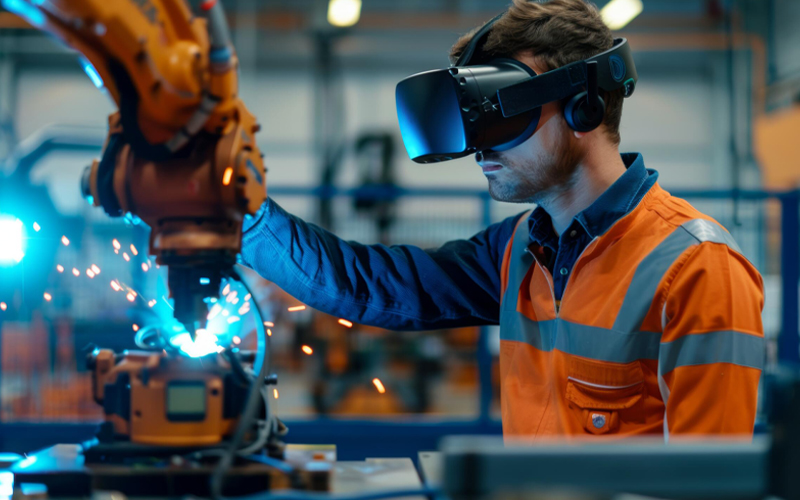Global energy consumption is expected to touch 740 million terajoules by 2040, a 77% increase from 2000. The increasing impact of climate change is forcing businesses and countries to focus on their energy consumption. In 2022, industries were responsible for 37% of global energy use. Energy efficiency in the industrial sector has a vital role in reducing fossil fuel utilisation and tackling climate change. Soaring energy costs are leading to a surge in operational expenses, especially in energy-intensive industries like semiconductors, steel, ceramic, and paper. Energy efficiency, considered the fifth fuel after coal, gas, nuclear, and renewables, is the key to keeping energy demands economically and environmentally prudent in manufacturing and the fastest and least expensive way to reduce a plant's carbon footprint. Let's have a look at the ways to achieve energy efficiency in manufacturing.
An Energy Management System (EMS) is a solution to visualise, monitor, and analyse energy consumption. EMSs, with AI and IoT, collect and analyse real-time energy data. With an EMS, the dynamic utilisation of plant machinery can be compared against defined target utilisation to identify deviations, allowing optimisation of operations for energy efficiency. Machines are made up of various energy-consuming parts. These parts generate unique energy profiles when they are in operation. An EMS enables the analysis of energy profiles for variable production levels, generating detailed information about energy consumption to identify problems.
The EMS's IoT-backed sensors collect energy data at the most fundamental and granular level, which is input to AI-enabled analytics to detect consumption patterns and provide actionable insights. Insights can be generated regarding critical energy parameters such as power interruption patterns and voltage and frequency trends. An intelligent EMS can predict future power consumption and load spikes. A cloud-based EMS provides an overview of consumption globally, by geographical area, and for each site by energy type. EMSs reduce operating costs and emissions and improve productivity.
A smart grid is a cutting-edge electrical network that uses digital technologies to supervise and control electricity supply. It enables two-way communication between the utility company and the user. It facilitates the integration of other energy sources, such as renewables, like solar and wind, into the grid. The grid is made smart by IoT-enabled sensors, automation, and AI, with these technologies working within the grid to respond to real-time electrical demand. Smart grids use AI to optimise energy storage device capacity to balance supply and demand and determine the most suitable dispatching scheme. The intelligent energy storage capacity planning and scheduling optimisation ensures a stable and efficient energy supply that minimises loss and disruption.
ML-based predictive analytics can analyse vast volumes of load, generation, and energy storage data. The analytic solution can determine future load and energy supply, avoiding overloading and under-supply problems. A smart grid also focuses on resiliency and is designed to address outages due to adverse events such as severe storms, earthquakes, large solar flares, or terrorist attacks. The grid's two-way communication capability triggers automatic rerouting on equipment failure or outage. The intelligent grid detects and isolates the outages, preventing large-scale blackouts. Recovery and resumption of electricity are quicker due to easier and faster diagnosis with smart grids. Power is routed to emergency services first after outages. Alternative power sources are accessed to the largest extent possible in case of failure in the conventional sources.
The digitalisation of the plant floor can significantly impact energy efficiency. With IoT and AI, proactive equipment fault detection and diagnosis is possible. Digital technologies provide real-time monitoring of manufacturing machines and processes, analyse system behaviour, detect new fault types, and predict failures based on historical and real-time data. AI-enabled proactive and effective maintenance optimises machine configuration and minimises energy consumption. It also prevents breakdowns and, consequently, avoids energy-intensive restarts.
There is considerable room for improving energy efficiency in temperature management for production processes through digitalisation. When temperatures are extreme, even slight variations greatly affect energy utilisation and product quality. Temperature data, along with process, product quality, and energy consumption data, can be input to analytic solutions that provide insights for improvement in temperature management, resulting in energy savings. If the conditions are not viable for physical sensors, soft or virtual sensors, which are inferential models that estimate process parameters using a large number of easily measured variables, are used.
Digital technologies can improve energy efficiency through real-time monitoring, effective maintenance management, and optimisation of the manufacturing environment and process through intelligent analytics. With digitalisation in manufacturing, energy efficiency can be genuinely regarded as the fifth fuel.
*For organizations on the digital transformation journey, agility is key in responding to a rapidly changing technology and business landscape. Now more than ever, it is crucial to deliver and exceed on organizational expectations with a robust digital mindset backed by innovation. Enabling businesses to sense, learn, respond, and evolve like a living organism, will be imperative for business excellence going forward. A comprehensive, yet modular suite of services is doing exactly that. Equipping organizations with intuitive decision-making automatically at scale, actionable insights based on real-time solutions, anytime/anywhere experience, and in-depth data visibility across functions leading to hyper-productivity, Live Enterprise is building connected organizations that are innovating collaboratively for the future.







